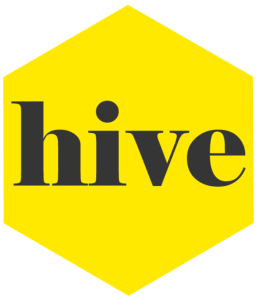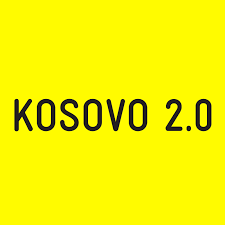In July 2024, the dead body of a man was found in the Sava River, at the border of Bosnia and Herzegovina (BiH) and Croatia, an EU and Schengen Area member. A few months later, 12 people died when a boat of people seeking to cross from Serbia to BiH capsized on the Drina River, which marks the border between the two countries. The passengers likely aimed to ultimately reach the EU.
Close to where the man’s body was found in the Sava stands a newly-built bridge. Constructed with EU funds, the bridge is intended to ease travel between the EU and non-EU neighbors, like BiH, for people whose papers allow smooth passage across the river border.
While labor shortages in the EU make legal immigration desirable from an economic standpoint, people who do not meet entry criteria and seek to reach the EU are put at great risk of losing their safety, rights and even their lives as a result of EU policies. It is well known that people on the move can perish trying to cross the Mediterranean, but other waterways on the path to the EU and Schengen Area are also risky junctions.
Across the EU, there is a misalignment between public perception of undocumented immigration and the reality of it. Scant attention has been paid to EU policies for managing entries and such policies’ devastating effects on the lives of millions of migrants, asylum-seekers and refugees, collectively known as people on the move.
While the EU sets up investment funds for infrastructure to improve connections with these neighboring countries, EU states simultaneously increase border controls, relying on an increasingly suspicious and violent border police.
The EU’s approach to unregulated immigration on the Balkan Route can be summed up in one word: hypocritical. The EU needs a constant flow of migrants to sustain its economy. Many are skilled workers from non-EU countries in the Balkans employed as nurses, retirement home staff, construction or agriculture workers. While the EU sets up investment funds for infrastructure to improve connections with these neighboring countries, EU states simultaneously increase border controls, relying on an increasingly suspicious and violent border police.
Construction of the new bridge over the Sava was completed in May 2024. It was financed in part by a 3.15 million euro grant from the EU and 65 million euro loan from the European Investment Bank, the EU’s investment bank. The bridge should be fully operational for vehicle traffic in April 2025.
While building a new bridge to improve connections between the EU and non-EU neighbors requires investments in the millions, strengthening controls to guard Schengen borders is an effort in the billions. This can be seen in increased funding for the Asylum, Migration and Integration Fund (AMIF), an EU fund for easing legal immigration to the EU while combating undocumented immigration and ensuring repatriation of non-EU nationals who have crossed the border without required documents. Its budget has increased from 3.137 billion euros allocated between 2014 and 2020 to 9.88 billion from 2021 to 2027.
Though there’s much to gain from infrastructure upgrades, the EU’s attention and resources devoted to strengthening migration for workers deemed necessary pales in comparison to much larger investments for keeping those considered “illegal” outside Schengen borders.
The BiH-Croatia borderlands have thus become a key area of EU investment. The area also demonstrates the twin realities of expediting the entry of migrants and workers deemed valuable while simultaneously increasing repression against those who do not meet entry criteria.
Human rights violations on the Balkan Route
The Balkan Route is a main corridor for people on the move heading toward the EU. With widespread economic insecurity and armed conflict in parts of the Middle East, Africa and southern Asia, an influx of people seeking better lives has been more or less steadily coming from these regions towards central and western Europe. People on the Balkan Route usually begin in Turkey and then proceed north through some combination of Bulgaria, Greece, North Macedonia, Albania, Montenegro, Serbia and BiH, trying to enter Croatia and travel onward.
Human rights violations frequently occur at Schengen borders and along the route, which is a fertile ground for abuse, even against minors. Per a Frontex report from January 2025, the percentage of minors identified among people deemed irregular migrants in 2024 rose to 16%, up from 13% the year before. These minors face significant trauma, not only during the long journey, which Save the Children found lasts an average of four years, but above all in migrant detention centers. According to a 2022 study by Save the Children in BiH and Serbia, perpetrators of abuse, in most cases, are border police and smugglers.
Unaccompanied minors face a particularly high risk of being trafficked or used in criminal activities by smugglers.
Exposure to violence is common for minors on the Balkan Route; almost all of those interviewed by Save the Children said they suffered abuse. Unaccompanied minors face a particularly high risk of being trafficked or used in criminal activities by smugglers. Children are mistreated in police hands, too. One 16-year-old, discussing widespread police violence in various places along the Balkan Route, told Save the Children that “The police will say: ‘are you really 15?’ and then slap me twice. Then they say: ‘You are lying, you are not 15, you are 20.’”
In July 2024, when the body was retrieved from the Sava River, the border of BiH and Croatia, local outlets in BiH reported the news in just a few lines. It was also taken up by the Sarajevo Times, an English-language portal. The man was simply described as likely being “of Afro-Asian origin.” It was also coldly reported that autopsy investigations were underway.
This is not an isolated case; the Balkan Route claims many more victims every year. The International Organization for Migration reported that 41 people went missing on the route in 2024, three of whom were children. Vehicle accidents and drowning are reported as the main cause of death and disappearance on the route, making the rivers Una, Drina and Sava among the most hazardous spots for people on the move.
Meanwhile, Croatian border police escalate border controls, stopping buses for hours, checking vehicles’ roofs, between the wheels, between the seats, in the luggage compartments, looking for undocumented migrants. The greatest inconvenience reported by news outlets in the area is the long lines at the border, with the most obvious solution being opening a second bridge and a second highway to speed up checks and reduce traffic.
In explaining its funding for the new bridge, the European Investment Bank cited long wait times for truckers at the Gradiška border crossing between BiH and Croatia. Truckers wait in line for up to eight hours; their understandable complaints are echoed by local commuters who cross the border for work weekly. But while the EU invests tens of millions of euros to ensure efficient transit between the Schengen area and BiH, thousands of people risk their lives trying to cross from Serbia to BiH and then out of BiH to Croatia annually.
The high difficulty of crossing the border hidden in vehicles pushes an increasing number of people to try to swim across the Sava.
Although building a new bridge and new highway connecting Banja Luka to Zagreb is one potential solution to traffic, addressing the traffic’s root causes is also necessary. Since Croatia joined the EU in 2013, and especially since it joined Schengen in 2023, its border with BiH has become a key EU frontier. This leads one to wonder whether the increased border congestion, which has developed in the last years, is primarily caused by more travel in and out of the EU or rather an escalation of border police controls.
The consequences of these extensive border checks go beyond traffic. The high difficulty of crossing the border hidden in vehicles pushes an increasing number of people to try to swim across the Sava. In the summer, with high temperatures slowly lowering the water level, many risk their lives trying to cross the border in this way.
An expose by The Guardian from October 2024 shows some of what people on the move face from Croatian police, if they do manage to cross the Sava. Croatian police, upon identifying migrants, are reported to burn personal belongings, including essential items such as documents, passports, glasses, phones and clothes, before violently pushing them back to BiH.
These acts of violence were confirmed by No Name Kitchen (NNK), a nongovernmental organization that assists people on the move on the Balkan Route and documents abuses. NNK found several huge piles of ash, in which the burnt remains of such personal objects were found. The discovery of the piles is accompanied by testimonies from people on the move, confirming that Croatian police rob and violently push migrants out of the EU.
Croatian border police have also been accused of sexually harassing migrant women. A 23-year-old pregnant Moroccan woman interviewed by NKK revealed that she was invasively searched by police and threatened with rape, an experience she called “the worst thing that has ever happened to her.” A 29-year-old Iranian asylum seeker told NNK, “The Iranian police broke all my teeth, the Croatian ones broke my nose and ribs.”
While episodes of violence at EU borders continue to occur and smuggling networks remain in place despite states’ and nongovernmental organizations’ efforts, human rights abuses on the Balkan Route are barely mentioned by newspapers in EU states. The press and public opinion are increasingly desensitized even to the most atrocious news about the frequent discovery of lifeless bodies on Mediterranean shores as anti-immigrant sentiment runs rampant.
As summer approaches and water levels in rivers will soon drop, it is crucial to draw attention to the risks people on the move face on the waterways along the Balkan Route. Focus on less-reported news about the human tragedies on the Balkan Route, such as deaths and disappearances on the Sava and Drina, is necessary for informed criticism on immigration policies through the Balkans and in the EU. It is fundamental for civil society organizations to pay attention to their countries’ treatment of people on the move and potential asylum seekers.
Feature image: Arianna Previtera.
 Want to support our journalism? Become a member of HIVE or consider making a donation. Learn more here.
Want to support our journalism? Become a member of HIVE or consider making a donation. Learn more here.

